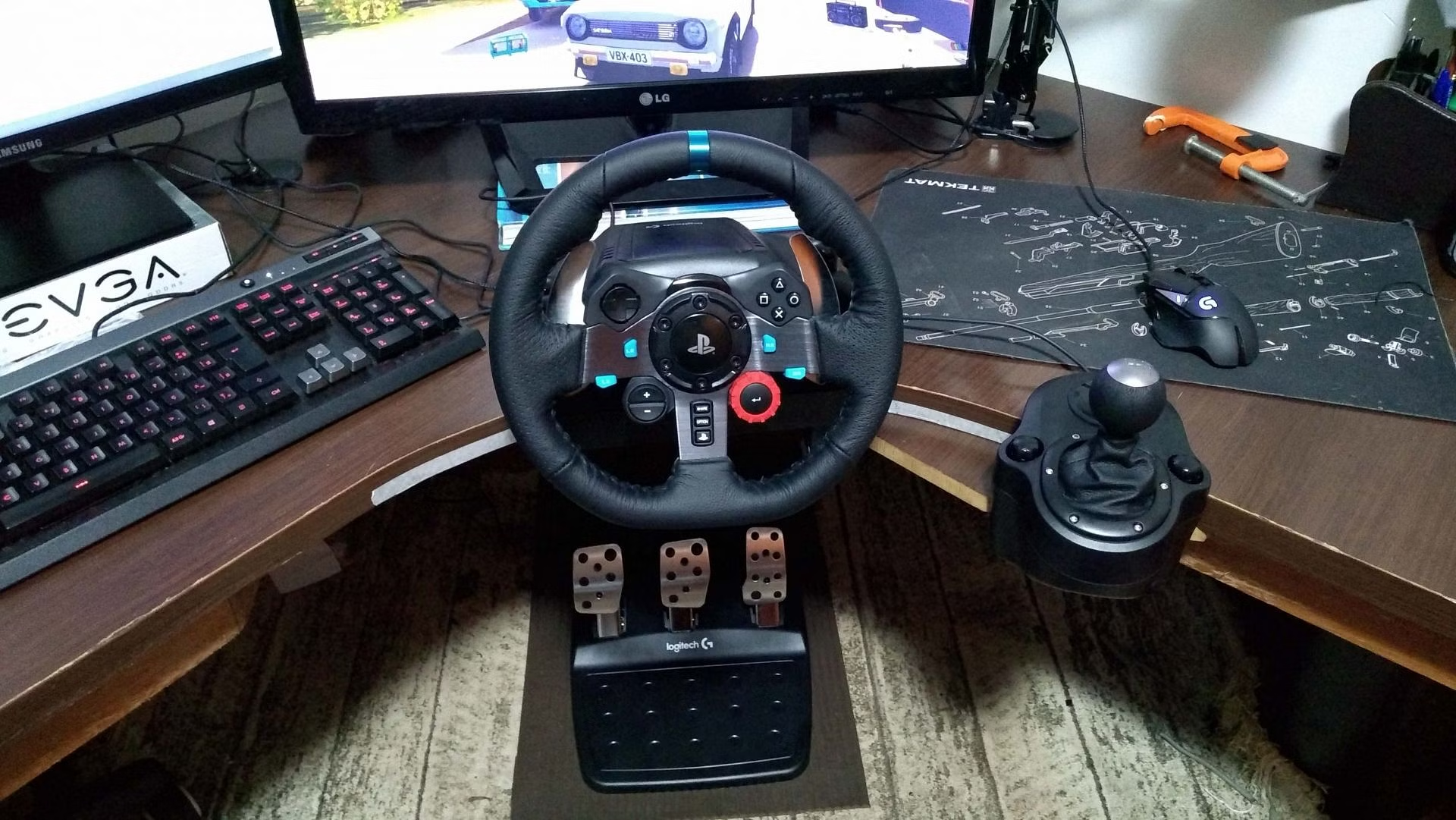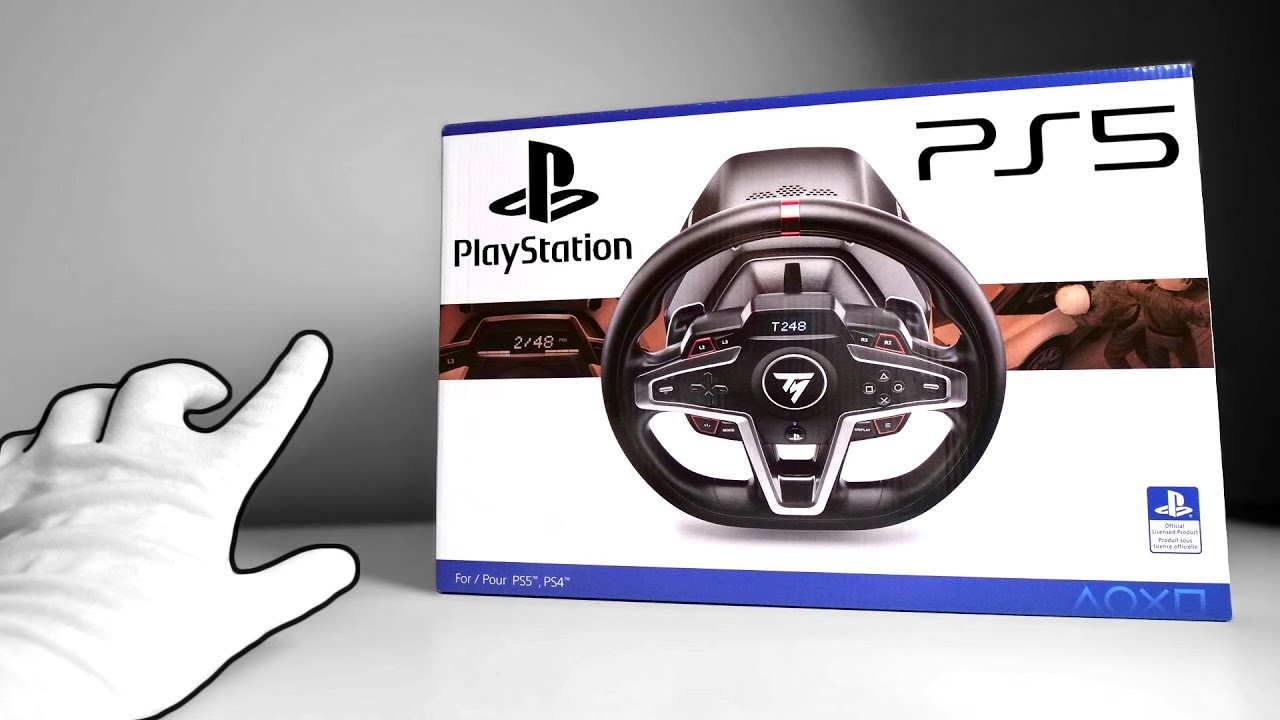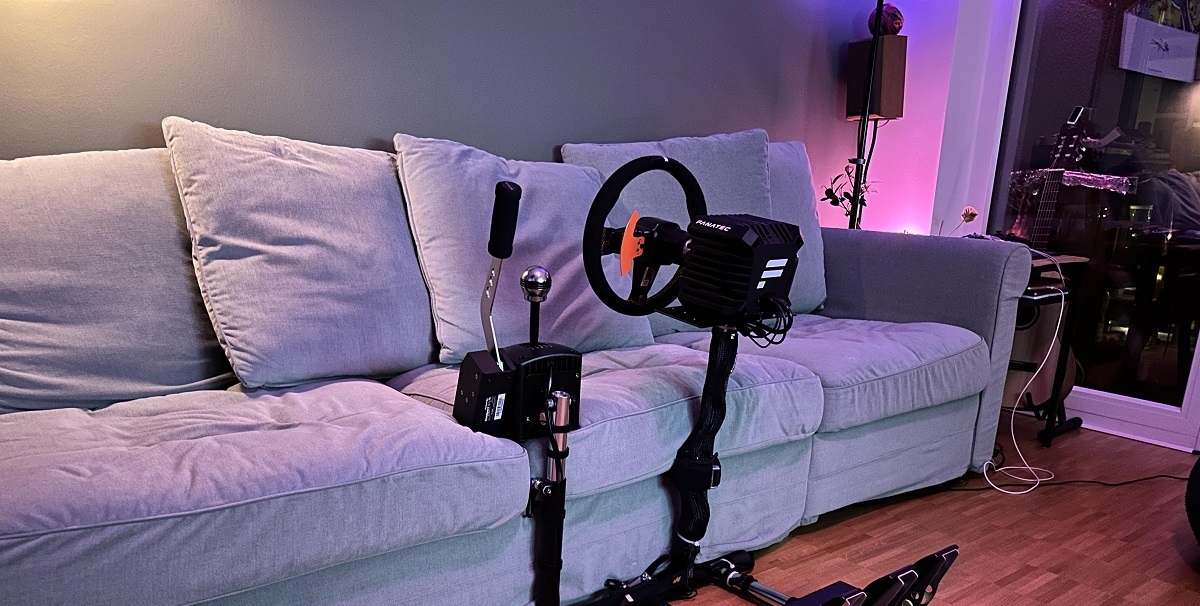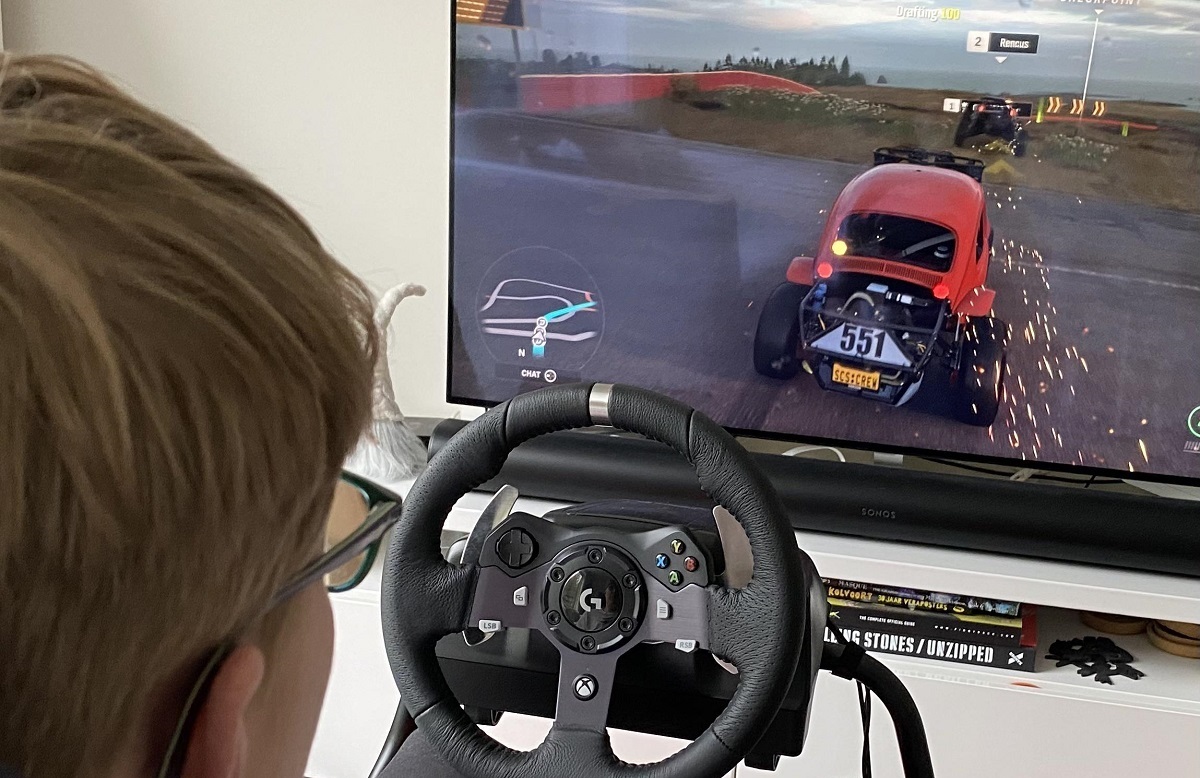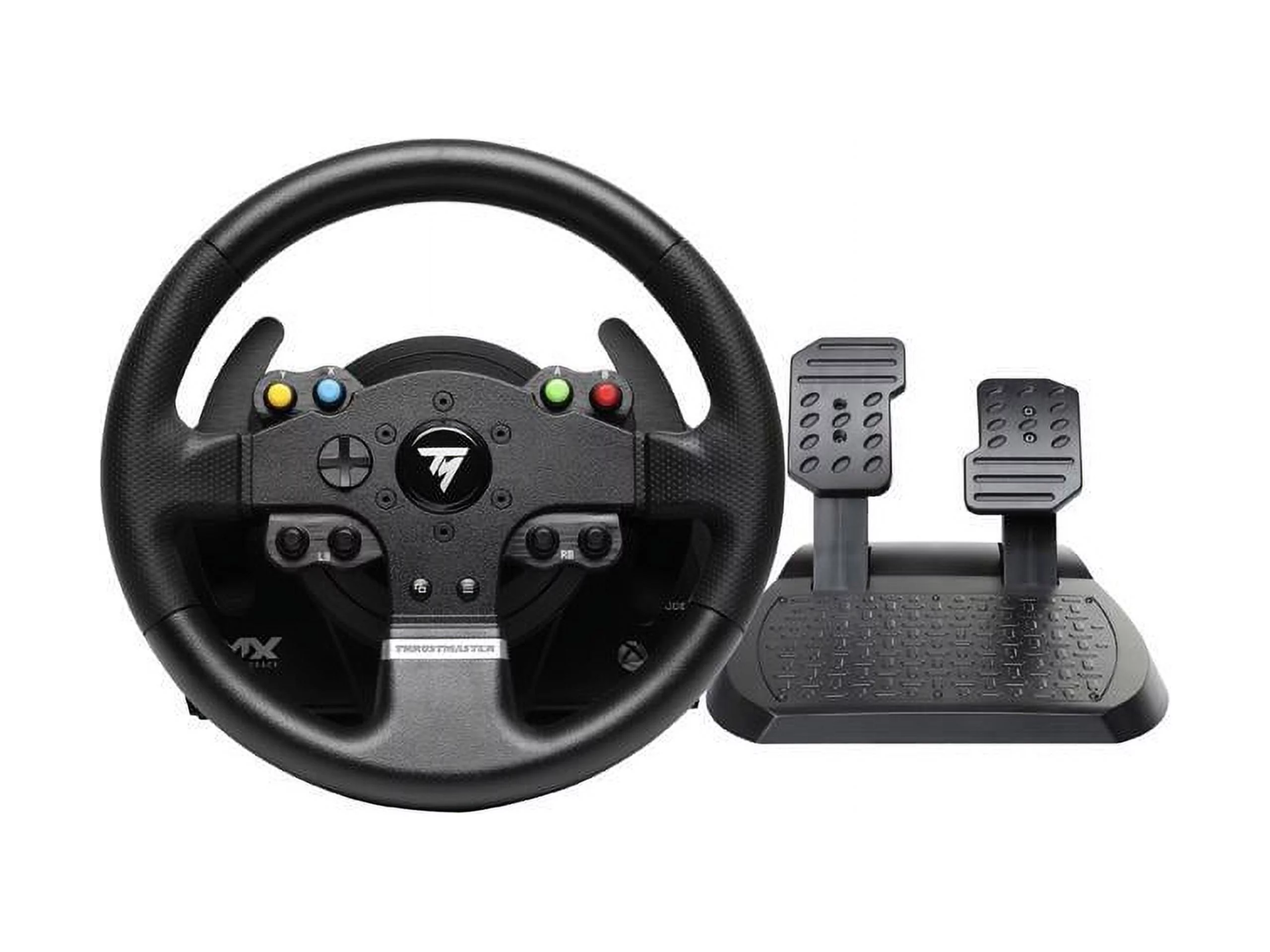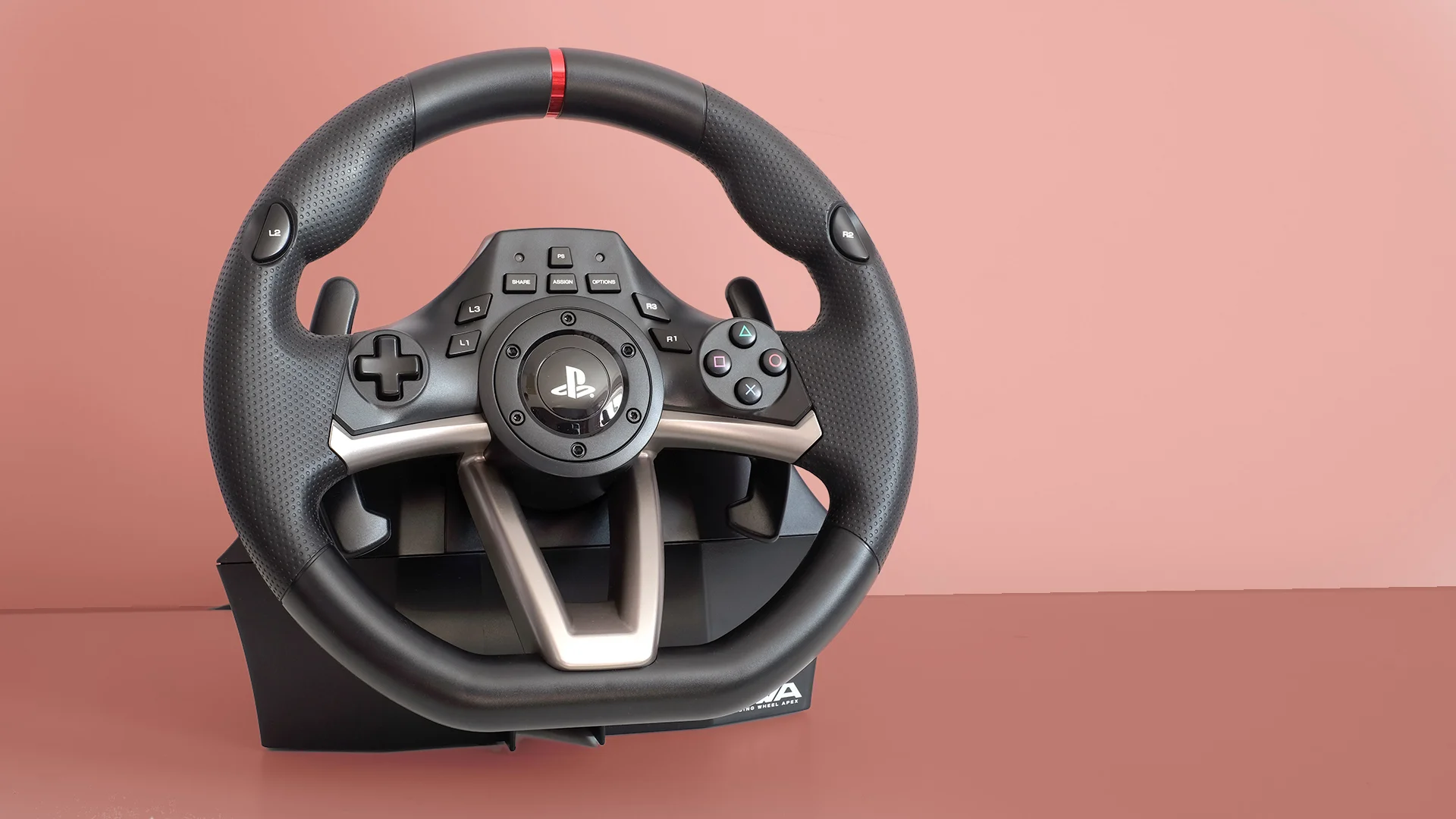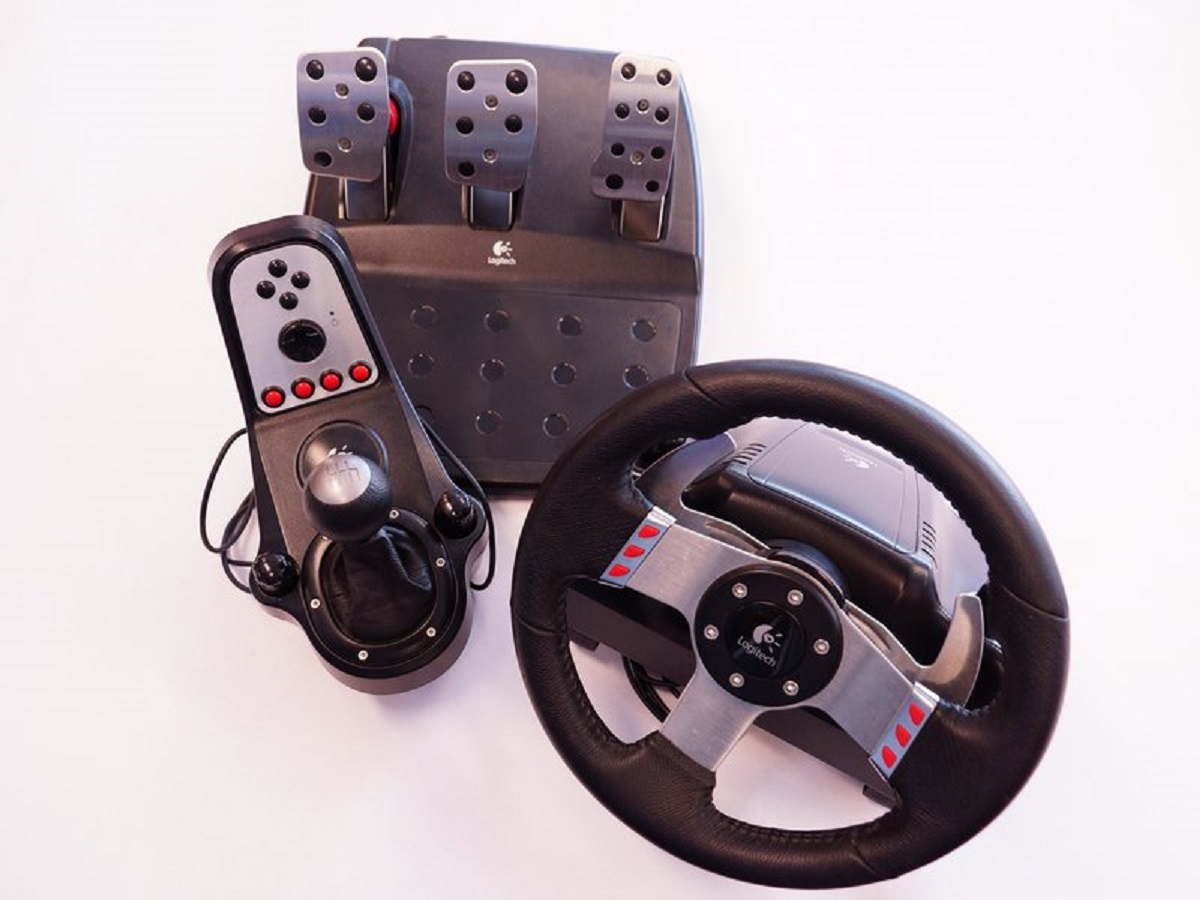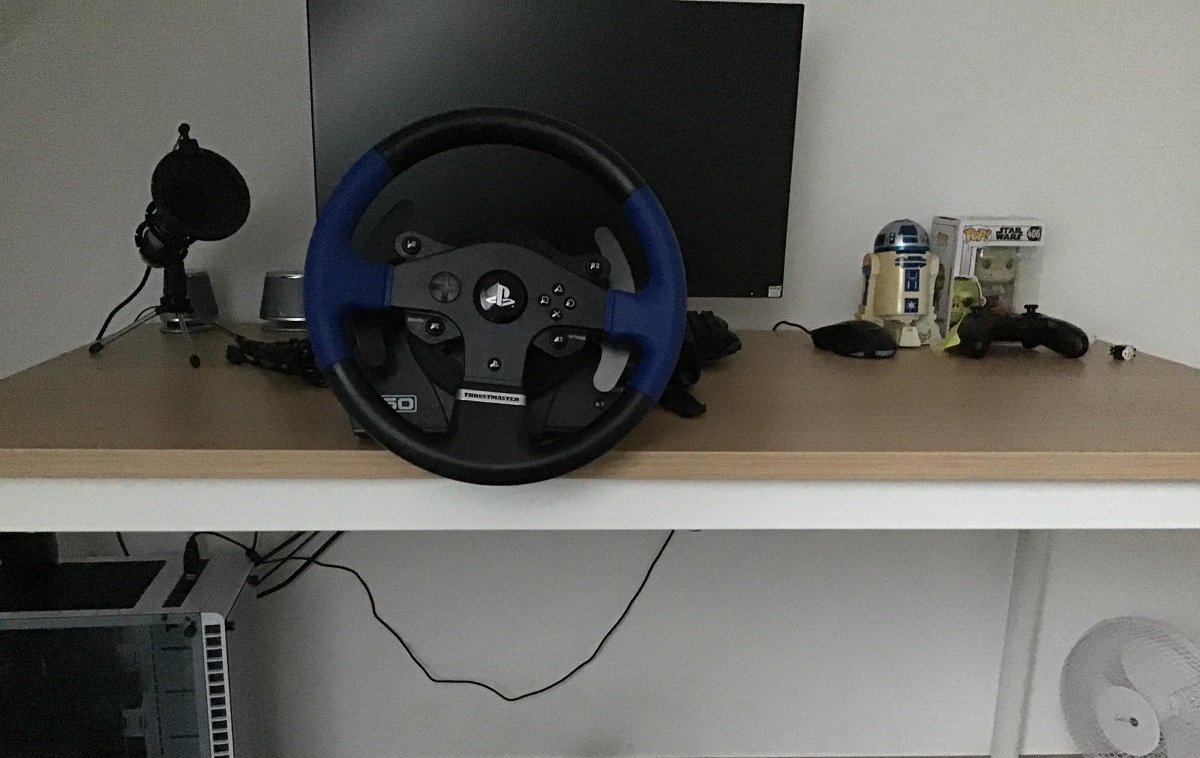Introduction
So, you've decided to take your racing game experience to the next level by investing in a racing wheel. Congratulations! A racing wheel can significantly enhance the immersion and realism of your favorite racing games, providing a more authentic and thrilling driving experience. Whether you're a casual gamer or a dedicated racing enthusiast, setting up a racing wheel can be a game-changer in how you interact with racing simulations.
In this guide, we will walk you through the process of setting up your racing wheel, from choosing the right wheel for your needs to installing drivers and software, adjusting settings, and testing your new setup. By the end of this tutorial, you'll be ready to hit the virtual racetrack with confidence and precision.
A racing wheel is more than just a peripheral; it's a gateway to a world of heightened realism and excitement. With the right setup and configuration, you can feel every turn, every bump, and every nuance of the road, giving you a competitive edge and a more immersive gaming experience. Whether you're into Formula 1, rally racing, or classic car simulations, a racing wheel can transform your gaming sessions into adrenaline-pumping adventures.
So, buckle up and get ready to dive into the exhilarating world of racing wheel setup. Whether you're a seasoned pro or a newcomer to the world of racing peripherals, this guide will equip you with the knowledge and skills to optimize your racing wheel setup and elevate your gaming experience to new heights. Let's get started!
Choosing the Right Racing Wheel
When it comes to selecting the perfect racing wheel for your gaming setup, there are several factors to consider to ensure that you make the most suitable choice. The market offers a wide array of racing wheels, each with its own set of features, compatibility, and price points. Here are some essential considerations to keep in mind as you embark on the journey of choosing the right racing wheel:
- Compatibility: Before making a purchase, it’s crucial to ensure that the racing wheel is compatible with your gaming platform. Whether you’re gaming on a PC, PlayStation, Xbox, or other platforms, check the wheel’s compatibility to avoid any compatibility issues.
- Force Feedback: Force feedback technology adds an extra layer of realism by simulating the forces experienced during actual driving. Look for a wheel with robust force feedback capabilities to immerse yourself fully in the gaming experience.
- Build Quality: A racing wheel should feel sturdy and durable, providing a realistic and reliable racing experience. Look for wheels with quality materials and construction to ensure longevity and performance.
- Adjustable Pedals: Many racing wheels come with accompanying pedals. Opt for a wheel with adjustable pedals to customize the experience to your preferences and ensure comfortable and precise control.
- Rotation Range: Consider the rotation range of the wheel. A wider rotation range allows for more precise steering control, making it ideal for a variety of racing styles and vehicles.
- Additional Features: Some racing wheels offer additional features such as programmable buttons, paddle shifters, and customizable settings. Evaluate these features based on your specific gaming needs and preferences.
By carefully considering these factors, you can narrow down your options and make an informed decision when choosing the right racing wheel for your gaming setup. Whether you prioritize realism, customization options, or compatibility, there’s a perfect racing wheel out there to elevate your gaming experience to new heights.
Setting Up the Racing Wheel
Once you’ve chosen the ideal racing wheel for your gaming needs, it’s time to embark on the setup process. Setting up your racing wheel involves several essential steps to ensure optimal performance and compatibility with your gaming platform. Here’s a comprehensive guide to setting up your racing wheel:
- Unboxing and Inspection: Carefully unbox your racing wheel and inspect it for any visible damage or missing components. Ensure that all necessary cables, pedals, and accessories are present before proceeding with the setup.
- Connecting the Wheel: Depending on the type of racing wheel you’ve chosen, follow the manufacturer’s instructions to connect the wheel to your gaming platform. This typically involves connecting the wheel to the console or PC via USB or using proprietary connectors for specific platforms.
- Connecting Pedals: If your racing wheel includes pedals, connect them to the wheel according to the provided instructions. Ensure that the pedals are securely connected and positioned for comfortable use during gameplay.
- Powering On: Power on your gaming platform and the racing wheel. Verify that the wheel’s power indicator lights up and that the platform recognizes the new peripheral. If necessary, install any firmware updates or drivers as per the manufacturer’s recommendations.
- Calibration: Many racing wheels require calibration to ensure accurate input detection and force feedback. Follow the calibration instructions provided with the wheel to fine-tune its settings for optimal performance.
- Testing the Controls: Once the wheel is connected and calibrated, test its functionality by navigating through the gaming platform’s menus and ensuring that the wheel’s buttons, paddles, and pedals are responsive.
By following these steps, you can effectively set up your racing wheel for an immersive and seamless gaming experience. Proper setup and calibration are essential for maximizing the potential of your racing wheel and ensuring that it integrates seamlessly with your favorite racing games.
Installing Drivers and Software
After physically setting up your racing wheel, the next crucial step is to install the necessary drivers and software to ensure optimal functionality and compatibility with your gaming platform. Racing wheels often come with specific drivers and software that enable advanced features, customization options, and seamless integration with racing simulations. Here’s a guide to installing drivers and software for your racing wheel:
- Manufacturer’s Website: Visit the official website of the racing wheel’s manufacturer to locate the latest drivers and software for your specific model. Manufacturers regularly release updates to improve performance and add new features.
- Driver Installation: Download the latest drivers for your racing wheel from the manufacturer’s website. Follow the provided instructions to install the drivers on your gaming platform, ensuring that the wheel is recognized and functions optimally.
- Software Installation: Some racing wheels come with dedicated software that allows users to customize force feedback settings, button configurations, and other advanced features. Install the accompanying software to unlock the full potential of your racing wheel.
- Firmware Updates: Check for firmware updates for your racing wheel. Firmware updates can address performance issues, enhance compatibility, and introduce new capabilities to the wheel. Follow the manufacturer’s instructions to update the wheel’s firmware if necessary.
- Configuration and Calibration: Once the drivers and software are installed, take the time to configure the settings according to your preferences. Adjust force feedback strength, steering sensitivity, and button mappings to tailor the racing wheel to your gaming style.
- Compatibility Testing: After installing the drivers and software, test the racing wheel’s compatibility with your favorite racing games. Ensure that the wheel functions as expected and that the installed software enhances the overall gaming experience.
By installing the appropriate drivers and software, you can unlock the full potential of your racing wheel, fine-tune its performance, and enjoy a more personalized and immersive gaming experience. Keeping the drivers and software up to date ensures that your racing wheel remains compatible with the latest gaming titles and delivers optimal performance across various racing simulations.
Adjusting Wheel Settings
Once you have installed the necessary drivers and software for your racing wheel, it’s time to delve into the process of adjusting the wheel settings to tailor the experience to your preferences and gaming style. Fine-tuning the wheel settings can significantly impact your control, immersion, and overall enjoyment of racing simulations. Here’s a comprehensive guide to adjusting the settings of your racing wheel:
- Force Feedback Strength: Many racing wheels allow users to adjust the strength of the force feedback, which simulates the resistance and vibrations experienced during driving. Experiment with different force feedback settings to find a balance between realism and comfort.
- Steering Sensitivity: Adjust the steering sensitivity to suit your preferred level of responsiveness. Higher sensitivity allows for quicker steering inputs, while lower sensitivity provides more precision for subtle steering adjustments.
- Button Mapping: Customize the button mappings on the racing wheel to streamline access to essential in-game functions such as shifting gears, activating assists, or navigating menus. Mapping buttons to your preferred functions can enhance convenience and efficiency during gameplay.
- Pedal Calibration: If your racing wheel includes pedals, ensure that they are calibrated to accurately detect varying levels of pressure. Proper pedal calibration is essential for achieving precise control over acceleration, braking, and clutch functions.
- Rotation Angle: Some racing wheels offer adjustable rotation angles, allowing users to switch between a full 900-degree rotation for authentic simulation experiences and a reduced rotation angle for arcade-style racing games. Customize the rotation angle based on the type of racing game you are playing.
- Advanced Settings: Explore advanced settings within the accompanying software, if available, to fine-tune additional parameters such as dead zones, vibration levels, and steering curves. These settings can further refine the wheel’s behavior to align with your preferences.
By carefully adjusting the wheel settings, you can optimize the racing wheel to deliver a personalized and immersive gaming experience that complements your individual playstyle. Experiment with different configurations, take note of the settings that resonate with you, and refine the adjustments to create the perfect setup for your racing simulations.
Mounting the Wheel
Mounting your racing wheel securely is essential to ensure stability, comfort, and an immersive gaming experience. The process of mounting the wheel involves positioning it in a way that allows for optimal control and minimal interference during gameplay. Whether you’re using a dedicated racing wheel stand, a racing cockpit, or a makeshift setup, proper mounting enhances the overall realism and enjoyment of racing simulations. Here’s a guide to effectively mounting your racing wheel:
- Racing Wheel Stand: If you have a dedicated racing wheel stand, follow the manufacturer’s instructions to assemble and position the stand at an ergonomic height and distance from your gaming setup. Ensure that the stand provides a stable and secure base for the racing wheel and pedals.
- Racing Cockpit: For those with a racing cockpit or simulator rig, adjust the seating position, pedal distance, and wheel mount to create a realistic and comfortable driving position. Secure the racing wheel to the cockpit’s mount according to the provided instructions.
- Desk or Table Mounting: If you are mounting the racing wheel to a desk or table, utilize clamps or mounting brackets designed for the specific wheel model. Position the wheel at a height and angle that allows for natural hand placement and easy access to the pedals.
- Stability and Adjustability: Regardless of the mounting method, prioritize stability and adjustability. A stable mounting setup minimizes unwanted movement during intense gameplay, while adjustability allows you to fine-tune the positioning for maximum comfort and control.
- Cable Management: Organize the cables and wires connected to the racing wheel to prevent tangling and interference during gameplay. Secure loose cables using cable ties or clips to maintain a tidy and unobstructed setup.
- Ergonomic Considerations: Pay attention to ergonomic factors such as seating posture, arm position, and pedal placement. A well-mounted racing wheel setup should promote a natural and comfortable driving posture to reduce fatigue during extended gaming sessions.
By effectively mounting your racing wheel, you can create an immersive and realistic driving environment that enhances your gaming experience. Whether you opt for a purpose-built stand, a customizable cockpit, or a DIY mounting solution, prioritizing stability, comfort, and ergonomics ensures that your racing wheel setup is optimized for hours of thrilling racing gameplay.
Testing the Wheel
After completing the setup and configuration of your racing wheel, it’s crucial to conduct thorough testing to ensure that the wheel operates seamlessly, responds accurately to inputs, and enhances your overall gaming experience. Testing the wheel involves evaluating its performance across different racing simulations, verifying force feedback responsiveness, and fine-tuning settings based on your preferences. Here’s a comprehensive guide to testing your racing wheel:
- Game Compatibility: Test the racing wheel with a variety of compatible racing games to assess its compatibility and performance across different titles. Ensure that the wheel is recognized by each game and that its functionality remains consistent across various racing simulations.
- Force Feedback Evaluation: Engage in gameplay scenarios that allow you to experience a range of force feedback effects, including road texture, tire grip, and environmental factors. Evaluate the wheel’s ability to convey realistic feedback and immerse you in the virtual driving experience.
- Control Precision: Assess the precision and responsiveness of the wheel’s controls, including steering input, pedal sensitivity, and button functionality. Verify that the wheel accurately translates your inputs into on-screen actions without noticeable delays or inconsistencies.
- Long-Term Comfort: Test the wheel for extended periods to gauge its comfort and ergonomics during prolonged gameplay sessions. Pay attention to any discomfort, fatigue, or ergonomic issues that may arise and make adjustments to the setup as needed.
- Customization Options: Explore the customization features offered by the racing wheel’s software, such as force feedback settings, button mapping, and advanced adjustments. Fine-tune these settings to align with your preferences and gaming style.
- Realism and Immersion: Evaluate the overall realism and immersion provided by the racing wheel setup. Assess how effectively the wheel enhances the sense of control, engagement, and authenticity in the virtual driving experience.
By thoroughly testing your racing wheel, you can identify any potential issues, optimize its performance, and tailor the setup to deliver a personalized and immersive gaming experience. Testing allows you to fine-tune the wheel’s settings, address any comfort or compatibility concerns, and ensure that it seamlessly integrates with your favorite racing games, ultimately enhancing your enjoyment of virtual racing adventures.
Conclusion
Congratulations on successfully setting up and testing your racing wheel! By following the comprehensive guide provided in this tutorial, you’ve gained valuable insights into choosing the right racing wheel, configuring its settings, and optimizing its performance for an immersive gaming experience. As you reflect on the journey of setting up your racing wheel, it’s important to appreciate the transformative impact it can have on your virtual racing adventures.
With the racing wheel in place, you now have the opportunity to elevate your gaming experiences to new heights of realism, precision, and excitement. The carefully curated process of selecting a compatible and feature-rich racing wheel, setting it up with attention to detail, and fine-tuning its settings to suit your preferences has equipped you with the tools to immerse yourself fully in the world of virtual racing.
As you embark on thrilling virtual races, rally challenges, and high-speed pursuits, the racing wheel serves as your gateway to an adrenaline-pumping realm of virtual driving. The nuanced force feedback, responsive controls, and customizable settings of the racing wheel enable you to feel every turn, conquer every track, and embrace the exhilaration of competitive racing.
Remember to periodically revisit the wheel’s settings, explore new customization options, and stay informed about firmware updates and game compatibility to ensure that your racing wheel setup remains optimized for the latest gaming experiences. Embrace the ongoing journey of refining your setup to align with evolving gaming preferences and technological advancements.
With your racing wheel setup primed for action, prepare to embark on countless virtual racing adventures filled with intensity, authenticity, and pure driving enjoyment. Whether you’re pursuing podium finishes, honing your drifting skills, or navigating challenging terrain, the racing wheel stands ready to deliver an immersive and captivating driving experience.
As you navigate the twists and turns of virtual racetracks, may your racing wheel serve as a reliable companion, enhancing your control, amplifying your excitement, and fueling your passion for the art of virtual driving. Embrace the thrill of the chase, savor the realism of every race, and let your racing wheel propel you into the heart of exhilarating virtual motorsport experiences.







